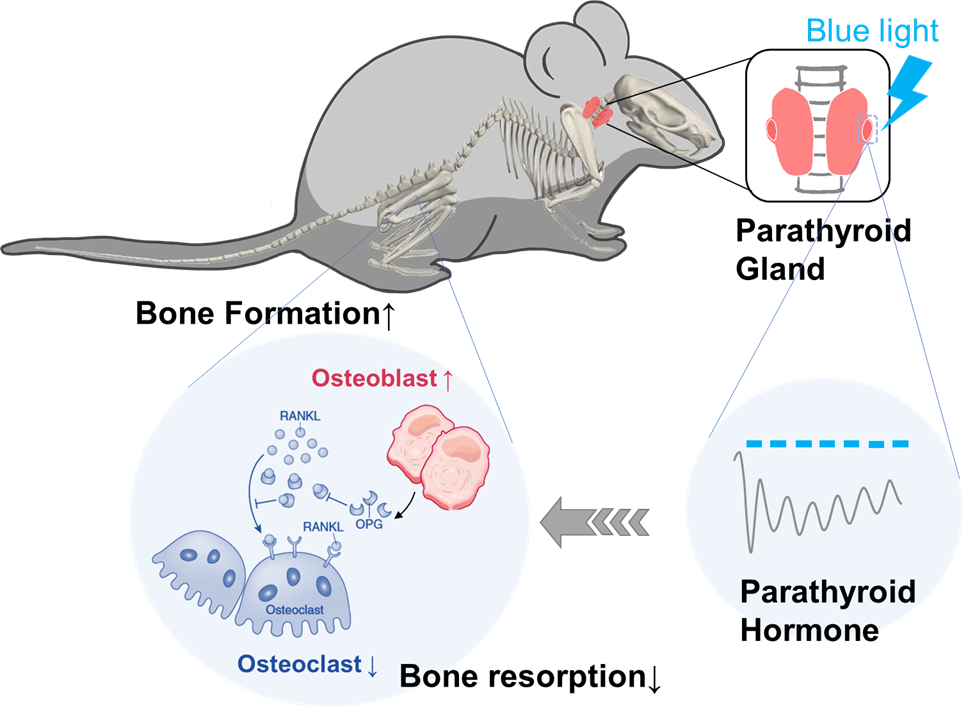Optogenetic Control of Parathyroid Hormone Secretion to Prevent Bone Loss
Date:10-02-2022 | 【Print】 【close】
Researchers led by Prof. YANG Fan from the Shenzhen Institute of Advanced Technology (SIAT) of the Chinese Academy of Sciences and their collaborators have proposed a new approach to control parathyroid hormone secretion in order to prevent secondary hyperparathyroidism (SHPT)-associated bone loss.
Their study was published in Nature Communications on Feb. 9.
Parathyroid hormone (PTH) is secreted by parathyroid chief cells. It plays an important role in maintaining calcium and phosphorus homeostasis and bone metabolism.
The regulation of PTH secretion in response to calcium fluctuations is mediated by calcium-sensing receptors (CaSRs) on parathyroid cells. However, in the progression of SHPT, the expression of CaSR in the parathyroid gland decreases, which leads to persistent hypersecretion of PTH. Excess PTH leads to a series of symptoms such as hypercalcemia, emotional abnormalities, and bone loss.
Traditional treatments including parathyroidectomy and calcium mimics cannot restore the rhythmic secretion of PTH. As a result, PTH cannot be physiologically regulated.
In this study, the researchers inhibited PTH secretion in both cell/organoid culture models and in situ/transplant animal models by using an optogenetic approach that bypassed CaSR. This approach partially attenuated SHPT-associated bone loss.
"The reason for the continuous high-level secretion of PTH in SHPT is that the expression of CaSR in the chief cells decreases, and the membrane potential and intracellular calcium response decrease in the challenge of extracellular calcium stimulation," said Prof. YANG.
The team found that optogenetic regulation of parathyroid chief cells could induce membrane potential changes and intracellular calcium responses as well as inhibit PTH secretion.
Experiments showed that opsin genes could be expressed in parathyroid glands in vivo, and light regulation could effectively inhibit PTH secretion in mice models of hyperparathyroidism.
The researchers also developed a calcium-response, automatic light-regulation system, in which the calcium electrode is used to sense changes in extracellular calcium concentration and thus control light stimulation. This automatic system can help parathyroid cells automatically respond to changes in extracellular calcium concentration so as to regulate PTH.
"Most interestingly, the chronic and rhythmic inhibition of PTH induced by optogenetics altered trabecular bone formation and influenced the bone remodeling process, thus partially attenuating bone loss induced by parathyroid gland transplantation in mice," said Prof. YANG.
This study sheds light on the potential use of optogenetic applications for the treatment of hyperparathyroidism-induced bone loss. It also provides a scientific basis for effectively intervening in the abnormal secretion of PTH to alleviate symptoms of anxiety and bone loss.

Optogenetic regulation of parathyroid hormone secretion and bone loss. (Image by SIAT)
Media Contact:
ZHANG Xiaomin
Email:xm.zhang@siat.ac.cn